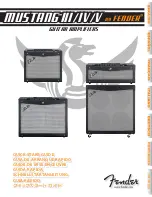
TEX1000-LCD
24 / 38
User Manual
Rev. 1.1 - 23/06/05
8.1.1 Surge Protection
This card contains two mains fuse accessible from outside (figure 6.2 note [18] and
[34]) and it contains a MOV battery to protect main supply and machine from over
range mains voltage. Then the mains voltage reaches the main Power switch placed
on front panel and, if it is on ON state, mains voltage arrives to TR1 service transformer.
One of its secondary output generates (through interface card) 24 V voltage that
excites power relè placed on Surge card, so PFC or rectifier units, connect to it, will
be on voltage.
8.1.2 PFC board (rectifiers)
PFC units are rectifiers that modulates absorbed current so that the wave shape is
sinusoide, having so 99% power factor.
PFC can work with input mains voltage from 90 V to 250 V. When you use it with
mains voltage of 110 V, is necessary to install two PFC units because there is a lot of
absorbed current. In PFC output there are 350 V of rectified voltage.
You can replace PFC units with one or two “traditional” rectifying units (but without
power factor protection).
8.1.3 Power supply
There are two power supply switching mode of 50 V 25 A, that have an input voltage
check. Output voltage is set from microprocessor in function of RF power required.
Two power supply units works in parallel mode and they have a balance current circuit
so that the distributed current from every module is approximately the same one.
8.2 Panel board - CPU
The panel card contains the microcontroller (PIC18F452) that implements the
machine's control software, the display and the other components needed to interface
the user.
The card interfaces with the other machine modules, both for power supply distribution
and for the control and measures.
8.3 Modem interface and battery-charger (Opz. /TLM)
Inside
TEX1000-LCD
is placed this interface that receives the mains signals of the
equipment and it makes available them on the connectors.
This interface is connected to the telemetry connector, to the I
2
C connector and to the
transformer from which it receives the various signals, feeds and to which it passes
the eventual commandos.















































